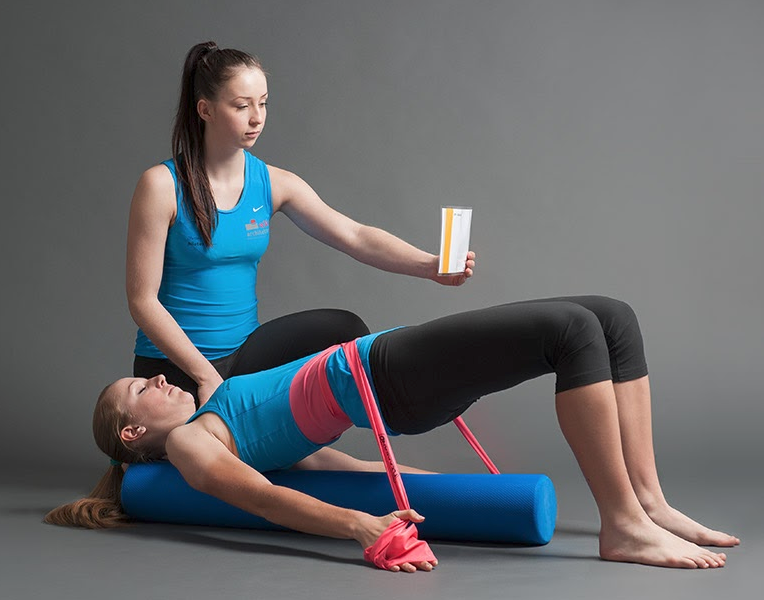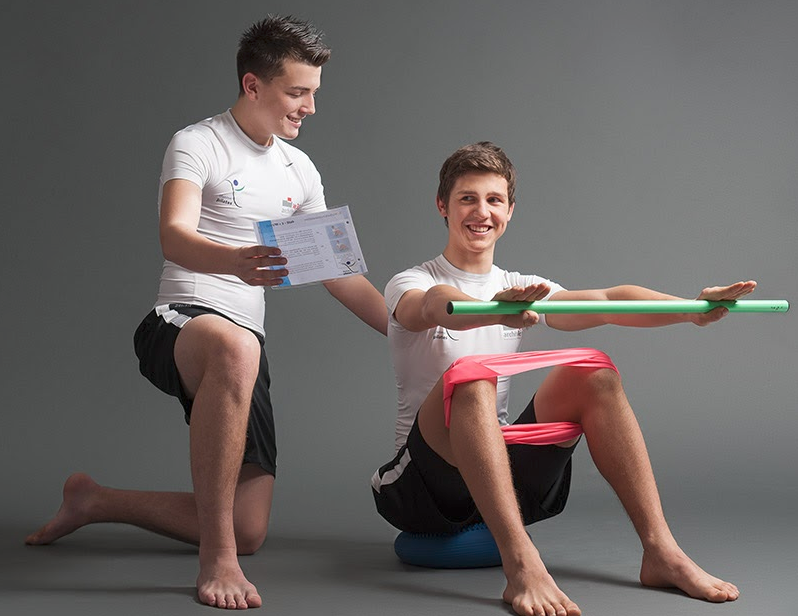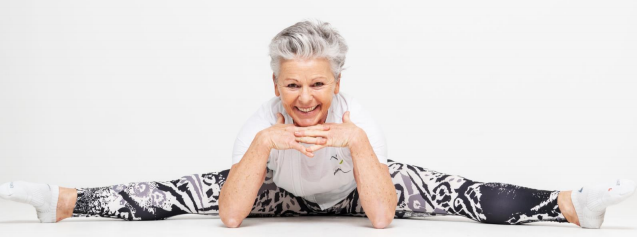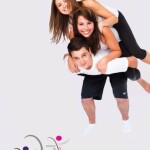Issue #309 – Wednesday, August 26, 2020
Pilates at School
A Dream Has Come True!
by Eva Obenaus
I was a teacher of physical education and history at a Commercial High School in Austria from 1978 until 2017. In 2004, I started my Pilates education with Juliana Afram in Hamburg, Germany. I still remember what my first thoughts were: “This movement program will be perfect for my pupils at school, because Pilates is ideal not only for their bodies but also for their minds.” After I was invited to teach Pilates for teachers at the annual teacher education week organised by VDLOE in Vienna, I began to think about possibilities of how to also make Pilates interesting for pupils between 14 and 20 years old, because this was the age group at my school in Lower Austria.
When I started teaching Pilates, hardly any of my colleagues had heard about it. Their interest was extremely high and this made me extremely happy. I wanted to convince both my fellow teachers and the State School Counselors for the nine Austrian provinces that Pilates had great benefits for students.
Around 10 years later, there was a general reform of the Curriculum for Physical Education at High Schools; to my pleasant surprise, I found Pilates included in the 12th grade plan, integrated into the methods of health and new lifetime sports. In the Austrian curriculum for physical education, there are many requirements placed on the sports teachers as to what they should teach their pupils.
For example, teachers should focus on lifetime sports and fitness trends as well as influence the lifestyle of the students. Moreover, they should make them increasingly aware of health matters. As a consequence, Pilates was integrated into the curriculum in 2016. Additionally, students are expected to teach their fellow students and give them feedback about their posture and the correct functional movements.
All this inspired me to teach them Pilates in the physical education classes. I compiled many different “Pilates cards“ with and without tools (sit ball, softball, ring, Theraband, stick/pole, etc.) and introduced Pilates to the classroom. I was really fascinated with “Pilates for School“, and our principal, Dir. Dr. Franz Hofleitner, together with many of my colleagues supported me in my efforts. Every day after 10 o`clock, all classes were allowed to do an “Office Break“ exercise, with all participants standing in front of their desks and two students in each class (so-called Pausenprofis – “break-professionals”) instructing their fellow students what to do.

Website media: http://www.lifetimepilates.at/medien.html
Trailer DVD – Lifetime Pilates Drives your life https://www.youtube.com/watch?v=8_SGzQG1QSM&t=5s
Workshop with Julian Afram at School: https://www.youtube.com/watch?v=VzZfOkoY6lU
Why is it important and helpful to start with Pilates at high school or even earlier?
The Pilates method respects the individual anatomy of every pupil, their possibilities and limitations. The Pilates principle Contrology, which means that the pupils can have control over their bodies through their minds, is one of the most useful learning experiences. In contrast to Yoga, Pilates does not focus on spirituality and meditation. Pilates is simple to structure and may be integrated into the classroom as well as the physical education classes. My primary Pilates practice was on the mat, but to make the exercises attractive and fun (i.e., not boring) for this age group, I used all the various tools I could find in a gymnastics room. Especially the girls liked it, because they experienced stress reduction and a positive feeling in their spines. When I told them about well-known actresses and actors who practised Pilates in order to improve their posture, they became even more interested in, and enthusiastic about, Pilates.
What kind of success results from integrating Pilates into the physical education classes at school?
Physical
-
Pilates is a functional training scheme, with the main focus being on the core, known as the Powerhouse, and therefore it helps the pupils to relax their peripheral muscles and internal organs.
-
Pilates strengthens the muscles near the spine, which helps them to improve their posture.
-
Their muscles will be formed healthily, so their bodies will look better.
-
During a long day, with the students sitting in front of the computer for many hours, a short break for some Pilates exercises will lead to a significant effect on the metabolism.
-
The pupils will become more mobile and get a good stretch.
-
For athletes, Pilates is a highly rewarding addition to their main type of sport.

Mental / Psychological
-
The pupils’ self-confidence increases, and therefore they will feel much happier.
-
Stress may be reduced, and therefore the pupils will be able to concentrate and focus after doing some Pilates.
-
They will be motivated to spend more time on movement exercises and sports in general.
-
Pre-Pilates may be useful in cases where a pupil is tired or feels sick, because it is likely to result in a better body feeling.
And the best of all, the pupils and their teachers will recognize the fast change and success resulting from Pilates workouts.
“After 10 sessions you’ll feel the difference, after 20 sessions you’ll see the difference, and after 30 sessions you’ll have a whole new body”. (Joseph Hubertus Pilates)
For Pilates at School, I compiled many Pilates-Cards and made some videos. These cards were used frequently in different schools with different pupils aged 10 to 20. The readers may order the Classical Lifetime Pilates cards (available in German) or DVDs on my website. www.lifetimepilates.at
Thank you for reading this article, and I hope I have inspired you to help getting Pilates established at schools as part of the physical education classes. Good luck.
Athletiktraining im Jugendalter http://www.bewegungskompetenzen.at/2020/index.php/798
Lifetime Pilates at school 1 https://vimeo.com/94948392
Lifetime Pilates at school 2 https://vimeo.com/105270912
Lifetime Pilates – cards new https://vimeo.com/425149962
Klassisches Mattentraining 1 https://www.youtube.com/watch?v=wInIB7eJ1Iw&t=546s

Eva Obenaus
- National all-around champion in artistic gymnastics, 1968-1972.
- Participant in the European and World Championships, 1971-1972.
- Studies: Sports and History, University of Vienna.
- Nationally-certified trainer in artistic gymnastics.
- Pilates instructor education with Juliana Afram in Hamburg , “Power Pilates”, 2004.
- Lecturer and workshop leader at further training courses on “Pilatesat School” at the Universities of Education in Lower and Upper Austria and the Austrian Association of Physical Education and Sports
- Comprehensive Pilates Teacher Certification by “The Pilates Standard”2018/19 (instructor: Sandra Käfer, Austria).

